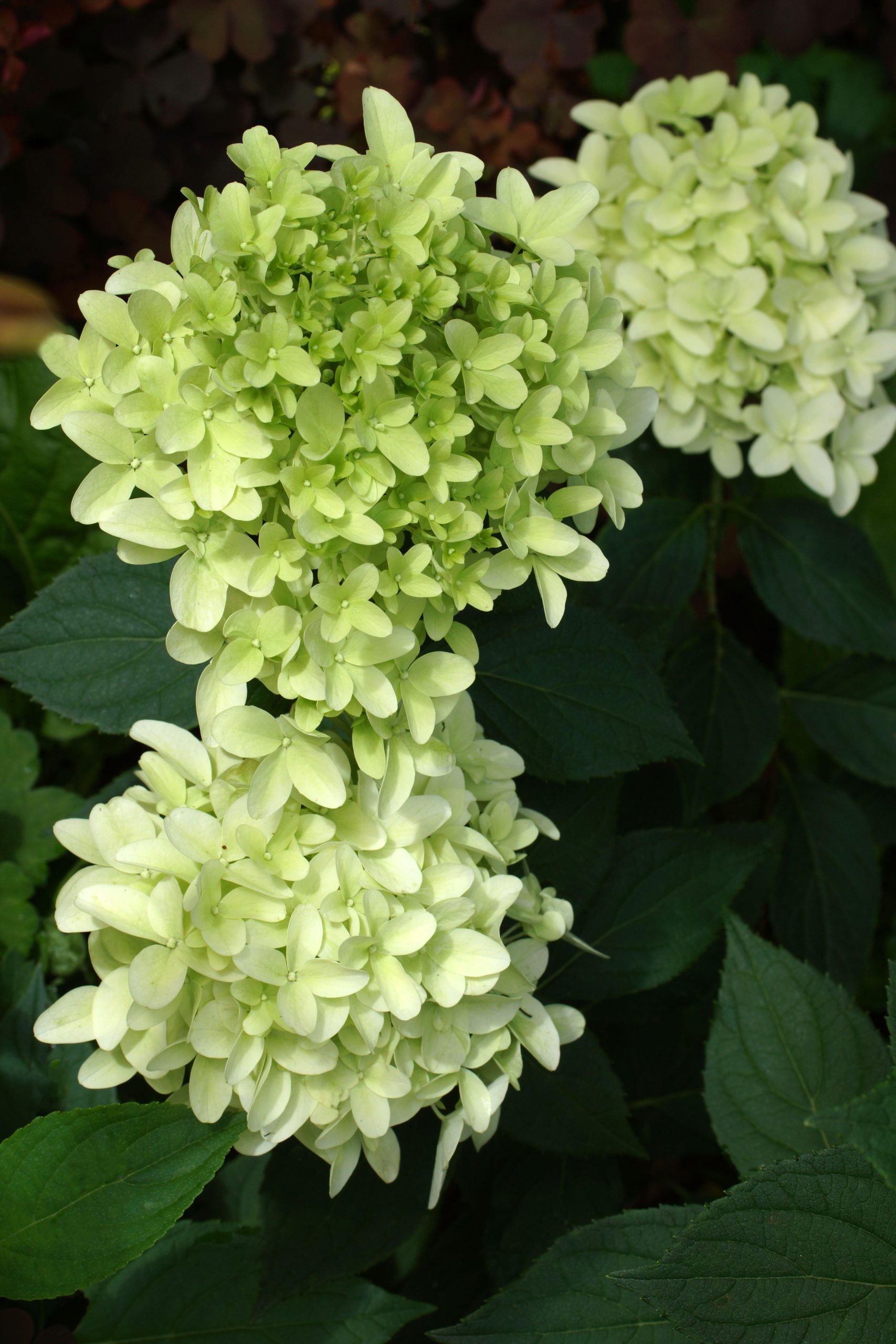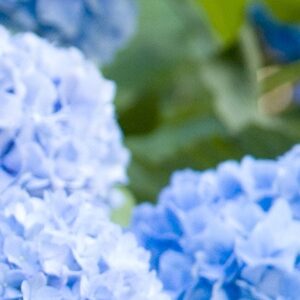Hydrangea pan. Skyfall
£30.00
Description
Quick Facts
- Common Name: Skyfall Hydrangea, Panicle Hydrangea
- Botanical Name: Hydrangea paniculata ‘Skyfall’
- Plant Type: Deciduous shrub
- Mature Height: 1.5-2m
- Mature Spread: 1.2-1.5m
- Flowering Period: July to October
- Flower Colour: White aging to pink and deep rose-pink
- Foliage: Dark green oval leaves turning yellow-bronze in autumn
- Hardiness: RHS H6 (hardy)
- Soil Requirements: Moist, well-drained, fertile
- Aspect: Full sun to partial shade
- Maintenance: Moderate
Description
Experience the breathtaking beauty of Hydrangea paniculata ‘Skyfall’, the spectacular compact hydrangea that brings exceptional flower power, extended seasonal interest, and elegant structure to gardens with its enormous cone-shaped blooms and reliable performance. This outstanding deciduous shrub offers remarkable qualities—massive cone-shaped flower panicles measuring up to 40cm long creating dramatic displays that are among the largest of any paniculata hydrangea, flowers opening white in summer then gradually aging through shades of pink to deep rose-pink creating constantly changing colour displays from July through October, strong upright stems that hold the enormous flower heads without flopping even in rain making this far more reliable than many large-flowered varieties, and compact neat habit perfect for small gardens, mixed borders, and containers where space is limited, making this one of the finest and most spectacular compact hydrangeas for creating long-lasting summer and autumn colour, architectural presence, and reliable beauty in gardens.
Throughout summer and autumn, this captivating shrub displays its characteristic dark green oval leaves measuring 10-15cm long with serrated edges and prominent veins creating lush foliage that provides excellent backdrop for the flowers. The leaves are held on strong upright burgundy-tinted stems that create sturdy structure. The overall effect is neat and architectural. But the shrub’s crowning glory appears from midsummer through autumn—enormous cone-shaped flower panicles measuring 30-40cm long (sometimes up to 45cm) composed of densely packed sterile florets creating spectacular displays. The flowers open in July in pure white creating fresh elegant displays, then gradually age through shades of soft pink, deeper rose-pink, and finally deep rose-pink to burgundy-pink by autumn creating constantly evolving colour that provides months of interest. The colour transition is gradual and beautiful—at any given time the panicles show multiple shades creating depth and complexity. The flowers are held on exceptionally strong upright stems—a key feature of ‘Skyfall’—that support the massive flower heads without flopping or requiring staking even after rain, unlike many large-flowered hydrangeas. The flowers can be left on the plant through autumn and winter where they dry beautifully creating stunning winter interest, or cut for fresh or dried arrangements. In autumn, the foliage turns attractive shades of yellow-bronze before falling.
This outstanding cultivar is part of the Hydrangea paniculata group, which originates from Japan and China. ‘Skyfall’ was bred specifically to combine the largest possible flowers with strong stems and compact habit—addressing the common problem of large-flowered hydrangeas flopping under the weight of their blooms. The cultivar name ‘Skyfall’ refers to the flowers cascading down like a waterfall. Hardy and adaptable, this hydrangea thrives in temperate climates making it perfect for British conditions, tolerating cold winters, urban pollution, and a range of soil types. Unlike mophead hydrangeas (H. macrophylla), paniculata hydrangeas flower on new wood, making them more reliable bloomers and easier to prune. Flowers reliably every year regardless of winter cold. Moderate growth rate, establishing within 3-5 years and producing spectacular displays once mature. The compact size makes this ideal for small to medium gardens and containers.
Create stunning compositions by planting as spectacular specimen shrubs in mixed borders, foundation plantings, or containers where the enormous flower panicles and extended colour displays can be fully appreciated. Exceptional in cottage gardens, contemporary landscapes, or as focal points near entrances, seating areas, or viewed from windows where the summer-to-autumn interest creates constant delight. Works beautifully planted in groups for enhanced impact, in cutting gardens where the flowers provide spectacular material for arrangements, or underplanted with late-summer perennials (Rudbeckia, Echinacea, ornamental grasses) that complement the pink tones. Magnificent in large containers on patios or terraces where the architectural form and massive flowers create dramatic displays. Perfect for creating long-lasting colour, architectural presence, and reliable beauty in gardens.
Caragh Garden Notebook
Planting: Space shrubs 1.5-2m apart for hedging or mass plantings, or allow 2m for specimen placement to accommodate the mature spread. Plant container-grown specimens year-round, though autumn or early spring is ideal. Dig holes twice the width of the root ball and incorporate generous amounts of organic matter and slow-release fertiliser. Plant at the same depth as the container. Water thoroughly and mulch generously around the base. Choose positions in full sun to partial shade—full sun produces best flowering and strongest stems, though some afternoon shade in hot areas prevents leaf scorch. Ideal for small to medium gardens, mixed borders, and containers.
Soil Preparation: Thrives in moist, well-drained, fertile soil with pH 5.5-7.5. Unlike mophead hydrangeas, paniculata hydrangeas are not affected by soil pH—flowers remain white and pink regardless of acidity. Prefers deep, moisture-retentive, fertile conditions enriched with generous amounts of organic matter (compost, well-rotted manure). Dislikes waterlogged or very dry soils. Tolerates a wider range of conditions than mophead hydrangeas. Best growth and flowering occur in full sun to partial shade with well-drained, fertile soil and consistent moisture—the massive flowers require substantial water and nutrients.
Container Growing: Excellent for container growing in large pots (minimum 45-50cm diameter) using soil-based compost enriched with slow-release fertiliser, creating spectacular patio features with enormous summer-to-autumn flowers. Water regularly and generously during growing season—do not allow to dry out as the massive flowers require substantial moisture. Feed fortnightly during growing season (April-September) with high-potash liquid fertiliser (tomato feed) to support the enormous flower production. Mulch surface with organic matter. Repot every 2-3 years in early spring. Container-grown specimens may produce slightly smaller flowers but still spectacular.
Seasonal Care: CRITICAL: Prune hard in late winter to early spring (February-March) before new growth begins—cut all stems back to 20-30cm from the ground (leaving 2-3 pairs of buds on each stem). Hard pruning is essential for best flowering as paniculata hydrangeas flower on new wood—the harder you prune, the larger the flowers. Without hard pruning, the shrub becomes tall and leggy with smaller flowers. Apply generous amounts of slow-release balanced fertiliser or well-rotted manure in early spring after pruning. Mulch thickly with organic matter. Water generously during growing season, especially during dry spells and while flowering—the massive flowers require substantial moisture. Deadhead spent flowers in late autumn or leave on the plant for winter interest (they dry beautifully). Generally pest and disease resistant. Very low maintenance apart from essential annual hard pruning. The strong stems eliminate the need for staking.
Propagation: Can be propagated from softwood cuttings in early summer or semi-hardwood cuttings in late summer with rooting hormone—success rate is good. Take cuttings 10-15cm long from non-flowering shoots, remove lower leaves, dip in rooting hormone, and insert in pots of compost and grit mix. Keep moist and shaded until rooted (6-8 weeks). Pot on and grow for a year before planting out. Home gardeners can easily propagate this variety, though nursery-grown specimens provide more immediate impact.
This spectacular beauty is absolutely breathtaking—one of the most impressive compact hydrangeas available! Those enormous cone-shaped flower panicles measuring up to 40cm long are jaw-dropping—among the largest of any paniculata! Flowers opening white then aging through pink to deep rose-pink create constantly changing displays from July through October—months of colour! The strong upright stems hold those massive flowers without flopping even in rain—no staking needed! Compact neat habit perfect for smaller gardens and containers, exceptionally hardy, flowers reliably every year. Remember hard pruning in late spring is essential for those spectacular blooms, and water generously during flowering. Perfect for mixed borders, containers, cutting gardens, and anywhere you want dramatic long-lasting summer-to-autumn colour. Pure flower power and spectacular beauty!
Additional information
| Pot Size |
|---|





